Cabinet refinishing is a cost-effective home improvement strategy that involves improving the appearance of worn-out or outdated cabinets without fully replacing them. It typically involves the removal of old paint or finish, Repair of any damaged parts, And then the application of A new paint or finish. This process can completely transform the aesthetics of a kitchen, bathroom, or any other space where cabinets are used, giving them a fresh, updated look while preserving their original structure and design. Cabinet refinishing is An excellent choice for those who value sustainability, Want to maintain the integrity Of their existing cabinets, Or are seeking to improve their home’s value on A budget.
Signs You Should Refinish Your Kitchen Cabinets
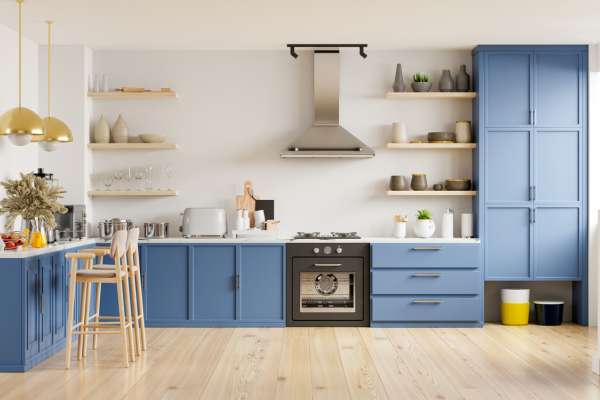
Recognizing the signs that your kitchen cabinets need refinishing is important for maintaining the aesthetics and functionality of your kitchen space.
Here Are Some Key Indicators:
Visible Wear and Tear: If your cabinets show noticeable signs Of wear, Such as scratches, dents, Or chipped paint, It may be time to consider refinishing. Over time, areas of high use, especially around handles and knobs, can become worn or faded.
Discoloration: Cabinets often discolor over time due to exposure to sunlight, cooking fumes, and general aging. If the color of your cabinets has dulled or yellowed, refinishing can help restore their original hue or provide an opportunity for a new color scheme.
Outdated Finish: If the finish or color of your cabinets feels dated or doesn’t fit with the rest of your kitchen decor, refinishing can be an affordable way to modernize your space without the cost and inconvenience of full replacement.
Difficulty in Cleaning: When the finish on cabinets breaks down, they can become more challenging to clean. If you’re finding that grime doesn’t wipe off easily or the cabinets always appear dirty or dingy even after cleaning, it might be time for refinishing.
Structurally Sound: If the basic structure of the cabinets is still in good condition, with solid frames, doors, and drawers, refinishing can make them look brand new. On the other hand, if the cabinets have structural issues like warping or damage from water or pests, refinishing may not be the best solution.
Budget Constraints: If you’re looking to update your kitchen on A tight budget, Refinishing the cabinets can Be A cost-effective alternative to replacing them entirely. It can drastically change the look Of your kitchen for A fraction Of the cost.
Understanding Kitchen Cabinets
1. Types Of Kitchen Cabinets Suitable For Refinishing
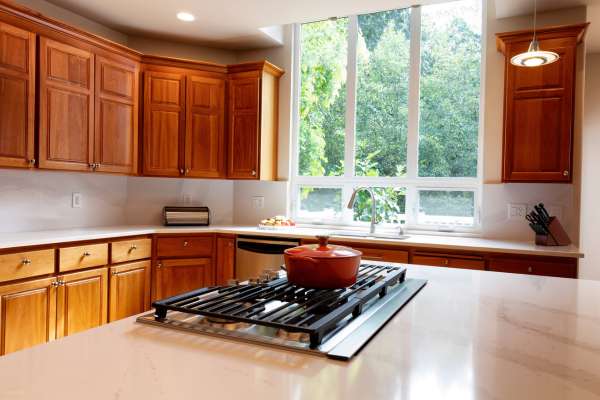
There are various types of kitchen cabinets that are good candidates for refinishing, primarily those made from sturdy, durable materials. Solid wood cabinets, whether they’re hardwood or softwood, are particularly suitable because Of their longevity And because they can Be easily stripped, repaired, and refinished. Cabinets made from plywood can also undergo this process, although the finish might not be as smooth. On the other hand, laminate and thermofoil cabinets can be a bit more challenging to refinish, requiring specific techniques and materials, but it’s not impossible. As a general rule, any cabinet that still has a robust structure but has a worn-out or outdated finish can benefit from refinishing.
2. Lifespan Of Kitchen Cabinets
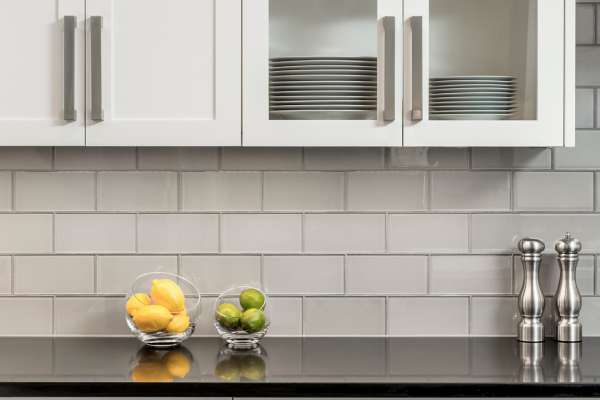
The lifespan Of kitchen cabinets varies depending on the materials from which they Are made And how well they are maintained. Premium quality solid wood cabinets can last for several decades, up to 50 years or more, with proper care. In contrast, cabinets made of particleboard or medium-density fiberboard (MDF) may have a shorter lifespan, typically around 10 to 15 years. It’s important to note that these lifespans can Be impacted by factors such as how frequently the cabinets are used, The level of maintenance provided, And environmental conditions like humidity and temperature.
3. Signs Your Kitchen Cabinets Need Refinishing
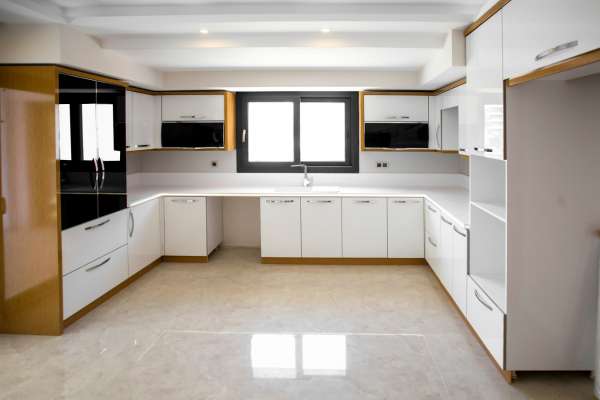
There are a few clear signs that your kitchen cabinets may need refinishing. This includes visible wear and tear like scratches, nicks, or dents, as well as faded or chipped paint. Cabinets may also appear discolored or dirty, even after cleaning, indicating that the finish may be wearing off. Furthermore, if your cabinet doors or drawers aren’t functioning as smoothly as they once did, but the overall structure is still sound, refinishing and replacing the hardware could be the right option. Ultimately, if your cabinets are solid but look worn out, refinishing could help revitalize them and enhance the overall aesthetic of your kitchen.
Kitchen Cabinet Refinishing Vs. Replacing

1. Cost Comparison
Refinishing kitchen cabinet is often much less expensive than replacing them. The cost of refinishing involves labor, materials for repairs, and new paint or stain, which is usually a fraction of the cost of brand new cabinetry. The exact price Of refinishing will vary depending on the size and number Of cabinet, The complexity of the job, And your geographical location, But it typically ranges between 30-50% of the cost of replacing the cabinets.
In contrast, replacing cabinets involves not just the cost of the new cabinet themselves, which can be significant, especially for custom designs, but also the cost of removing and disposing of the old cabinet, preparing the area for new cabinet, and installation.
2. Time And Effort Involved
Refinishing cabinets also generally takes less time than replacing them. Refinishing can often be done in A few days to A week, Depending on the size Of the kitchen and the condition of the cabinet. The process involves cleaning, removing old paint or finish, making minor repairs, applying new paint or finish, and drying.
Replacing cabinets, on the other hand, is a larger undertaking. It requires removing the old cabinet without damaging the surrounding area, possibly modifying the space to accommodate new cabinets, installing new cabinets, and cleaning up. This process can take several weeks or more, particularly if you’re getting custom cabinets.
3. Impact On The Environment
From an environmental perspective, refinishing is a more sustainable option than replacing. Refinishing keeps the existing cabinet, thereby reducing the amount of waste that goes to the landfill. It also conserves the resources that would be used in manufacturing new cabinet.
Replacing cabinets creates more waste, as the old cabinet typically end up in a landfill. Also, new cabinet require more raw materials and energy to manufacture and transport, contributing to a larger carbon footprint.
The Process Of Kitchen Cabinet Refinishing
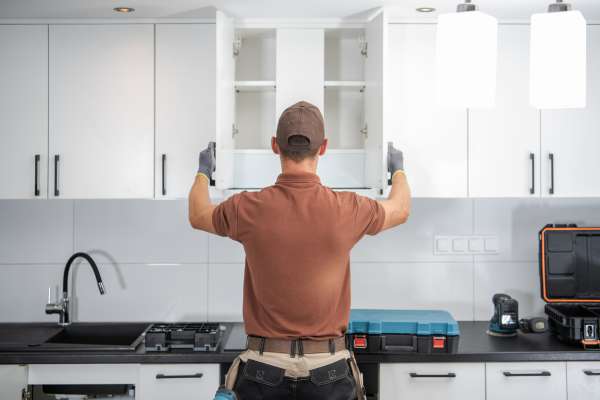
1. Materials And Tools Needed

The materials and tools required for cabinet refinishing will depend on the specific refinishing technique, but some common ones include:
- Cleaning supplies (mild dish soap, warm water, sponge or rag)
- Sandpaper of varying grits
- Wood putty for repairs (if needed)
- Primer
- Paint or stain
- Clear topcoat for protection (optional)
- Brushes, rollers or paint sprayer
- Safety gear (gloves, mask, eye protection)
2. Preparation Steps
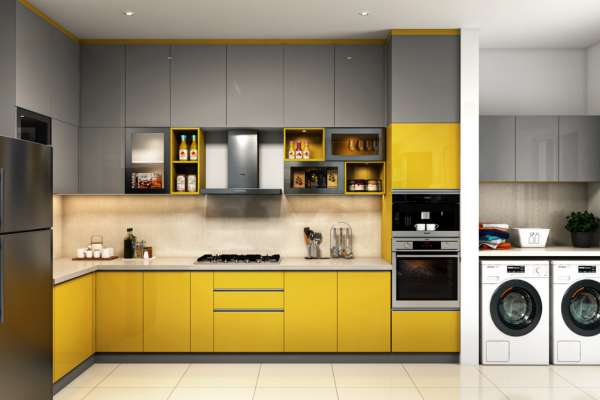
Before beginning the refinish process, there are several preparation steps:
- Empty the cabinets and remove all hardware, including handles, knobs, and hinges.
- Clean the cabinets thoroughly with A mild soap and warm water to remove any grease, grime, Or dust.
- If there are any holes, cracks, Or dents in the cabinet, Fill them with wood putty And allow it to dry.
- Sand the cabinet surfaces with medium-grit sandpaper to remove the old finish and smooth out any imperfections. This also helps the new paint or stain adhere better.
3. Detailed Step-By-Step Refinishing Process
Once the preparation is done, you can start the actual refinishing process:
- Apply a primer to the cabinets. This provides a base for the new paint or stain and helps it adhere better. Allow the primer to dry completely.
- Once the primer is dry, Lightly sand the cabinet again with fine-grit sandpaper to ensure A smooth finish. Wipe away any dust with a damp cloth.
- Apply the paint or stain. If you’re using paint, consider using A semi-gloss Or gloss finish as they’re easier to clean And more durable. If you’re using stain, select one that complements your kitchen’s decor. You may need to apply multiple coats to achieve the desired color and coverage. Allow each coat to dry completely before applying the next.
- After the final coat of paint or stain is dry, you might choose to apply a clear topcoat for added protection, especially if you’ve used stain. This step is optional but can extend the life of your finish.
- Once everything is completely dry, reattach the hardware and reinstall the doors and drawers.
4. Post-Refinishing: Care And Maintenance
After the refinishing process, it’s important to take steps to keep your cabinet looking their best:
- Clean up spills immediately to avoid staining the finish.
- Dust cabinets regularly with a soft, dry cloth or duster.
- Clean the cabinet periodically with A mild soap and warm water, But avoid using abrasive cleaners that can damage the finish.
- If your cabinet have a clear topcoat, reapply it every few years to maintain the protective layer.
Benefits Of Kitchen Cabinet Refinishing

1. Enhancing Aesthetics
One of the primary benefits of kitchen cabinet refinishing is the noticeable enhancement of your kitchen’s aesthetics. Over time, kitchen cabinets can become worn, scratched, or outdated. By refinishing your cabinets, You can give them A fresh, new look that can completely transform the overall appearance Of your kitchen. Whether you’re brightening up the space with A lighter color, Adding sophistication with A darker hue, Or creating A more contemporary feel, refinishing allows you to customize the appearance Of your cabinets to match your personal taste and the style Of your home.
2. Increasing Durability
Refinishing cabinets can also increase their durability. The process usually involves repairing minor damage, reinforcing weak spots, and adding a new layer of paint or finish, which can protect the cabinet from wear and tear, moisture, and other potential damage. This means your cabinets will not only look better, But they’ll also be more resilient And may last longer.
3. Boosting Property Value
Upgrading your kitchen, including refinishing your cabinet, can boost your property’s overall value. Kitchens often play a crucial role in home valuation and potential buyers’ impressions. A well-maintained and aesthetically pleasing kitchen can significantly contribute to a higher selling price if you decide to sell your home. Additionally, because refinishing is less expensive than A full kitchen remodel, The return on investment can Be substantial
4. Promoting Sustainability
Finally, refinishing cabinets promotes sustainability. Instead of removing and disposing of your old cabinet, which contributes to landfill waste, you’re giving them a new life. This reduces demand for new materials, like wood or metal, and the energy needed to manufacture and transport new cabinets. By choosing to refinish instead of replace, you’re making a more environmentally friendly decision.
Potential Challenges And Solutions In Kitchen Cabinet Refinishing
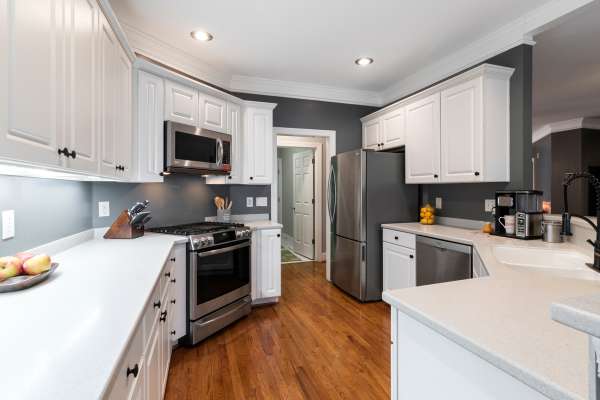
1. Common Mistakes
Cabinet refinishing can present several challenges, particularly for those unfamiliar with the process. Common mistakes include:
- Not Cleaning or Preparing Cabinets Properly: If cabinets are not thoroughly cleaned and sanded before refinish, the new paint or stain may not adhere correctly, leading to an uneven finish.
- Using the Wrong Materials: The type of paint or stain you use matters. Some products might not be suitable for kitchen cabinet or might not provide the durability you need.
- Skipping Primer: Skipping the primer step can lead to poor adhesion of paint or stain, resulting in peeling or chipping over time.
- Rushing the Process: Each step in the refinish process, from preparation to drying, requires time. Trying to speed things Up can lead to poor results.
2. Tips To Overcome Challenges
Here are some tips to overcome these challenges:
- Properly Prepare Cabinets: Take the time to clean your cabinet thoroughly and sand them well. This step is crucial for ensuring that the new paint or stain adheres properly and lasts longer.
- Use Quality Materials: Invest in good-quality paint or stain and primer that are suitable for kitchen cabinet. Also, use the right brushes or rollers to achieve a smooth finish.
- Patience is Key: Allow sufficient time for each step of the process, particularly drying times between coats of paint or stain and after the final coat. This will ensure the best finish and longevity.
- Follow Instructions: If you’re using a refinishing kit, follow the manufacturer’s instructions carefully.
3. Hiring Professionals Vs. Diy Kitchen Cabinet Refinishing
Whether to hire professionals Or do it yourself depends on your comfort level with home improvement projects. The complexity Of the job, And your budget.
If you’re confident in your skills, Have the necessary tools, And have enough time, DIY can Be a cost-effective option. However, Keep in mind that refinishing cabinet can Be a time-consuming and labor-intensive process.
On the other hand, Hiring professionals can ensure the job is done correctly And efficiently. Professionals have the experience And tools to handle any issues that might arise during the refinish process. While it may cost more upfront, It can save you time and potentially prevent costly mistakes.
The Final Thoughts
Cabinet refinishing is A cost-effective, eco-friendly, And aesthetically pleasing approach to rejuvenating your kitchen or bathroom spaces. It is A process that involves the repair And repainting Or restaining of existing cabinetry, effectively extending their lifespan while refreshing their look. The benefits of this process are multi-fold, Including enhancing the visual appeal Of your space, increasing the durability Of your cabinets, boosting the overall property value, and promoting sustainability. While refinishing can present a few challenges, careful planning, patience. And attention to detail can result in beautifully updated cabinet that can transform the entire ambiance of your kitchen or bathroom. Whether you decide to take the DIY route or hire professionals, cabinet refinishing can provide an impressive makeover for your cabinetry while preserving both your budget and the environment.
